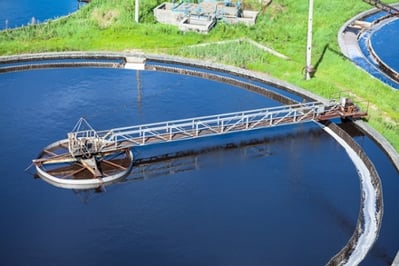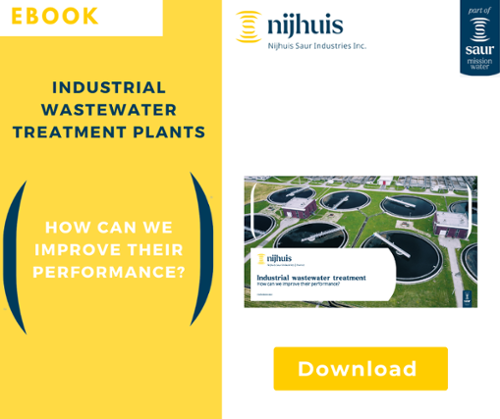The treatment of industrial wastewater is not only a regulatory necessity, but also an environmental imperative. But the ambition is now to go further by improving the performance of industrial wastewater treatment plants to prevent them from becoming money pits, and allow them to take up their rightful role as the final stage of the production process.
Why does industrial wastewater treatment plant performance need to be improved?
Until fairly recently, industrial wastewater treatment plants were seen as little more than common garbage bins. Since then, the introduction of official and environmental constraints and the imposition of prefectoral discharge standards have begun to change attitudes. But the fact remains that today, industrial wastewater treatment plant performance is all too often measured only by its ability to comply with the appropriate regulations. Industrial companies have become aware of the need to add value to this resource, which is much too commonly treated as simply another cost center.

But the truth is that by receiving the water discharged by the production plant, the wastewater treatment plant is a reflection of effective site operation, and is therefore the final stage in the production process. The performance of an industrial wastewater treatment plant is measured and assessed just like any other part of that process on the basis of regulatory and environmental criteria, but also against financial criteria.

How can wastewater treatment plant performance be assessed?
Industrial wastewater treatment plant performance depends primarily on the pollutant content of the inflow load, firstly because if it exceeds the treatment capacity of the plant, the site may exceed its legally binding discharge thresholds. Even in the best of circumstances, this will inevitably be penalized by significant levels of fines. In the worst case scenario, it may result in plant closure.
And then because the higher the inflow load to be treated, the more energy and reagents will be consumed by the treatment process, because the volumes of waste generated will also be higher (not to mention the human resources that will need to be involved). All of these come at a cost, which is further increased by the value of raw materials lost as a result of entering such high inflow loads.
The ultimate goal is therefore to transform what appears to be a cost center into an expenditure reduction improvement center. There are several ways of achieving this:
- Ensuring that the plant is operated and managed responsibly by people with the necessary expertise who work closely with the production teams
- New treatment technologies
- The chemicals and energy that keep these units running, and the efficiency of the day-to-day work done by the experts concerned
- The waste produced by the treatment systems, which can increasingly be recovered via specialist channels to boost the financial performance of the system
So the focus needs to shift to a new way of looking at industrial wastewater treatment plant performance; a more expert and more technical view than that which simply concerns itself with routine monitoring and basic maintenance work.
Transparency is key
The human factor is absolutely central to all strategies for improving industrial wastewater treatment plant performance, because the discharges from production facilities are a source of industrial pollution, so personnel awareness of this issue is clearly of crucial importance.
But also because efficient wastewater treatment plant management relies essentially on having a clear understanding of the manufacturing process that provides its inflows, and the establishment of a trust-based relationship between the industrial user and the wastewater treatment plant operator. This close working relationship makes it possible to anticipate the arrival of heavy loads during more intense periods of production, cleaning phases or production accidents. These peak loads can then be at least partially diverted to emergency holding tanks (so-called ‘calamity’ tanks) to avoid overshooting emissions thresholds. The diverted inflows can then be treated at a later time when treatment plant capacity permits.
The same need for transparency applies to the treatment plant operator, which has responsibility for monitoring a set of technical parameters in place to characterize discharges at the point where they enter the plant. Today’s communication technologies enable continuous on-call monitoring of these parameters, even when the production plant is generating effluent 24/7 as a result of shift working. The resulting data can then be shared with production teams as part of a program of continuous improvement designed to maximize the performance of the industrial wastewater treatment plant and the production system. This arrangement benefits from the operator's expertise in the field, and provides a very natural way to build a strong working relationship with the industrial plant operator.
Want to know more?
Take a look at our eBook guide on this subject or e-mail us at: saur.industrie@saur.com
